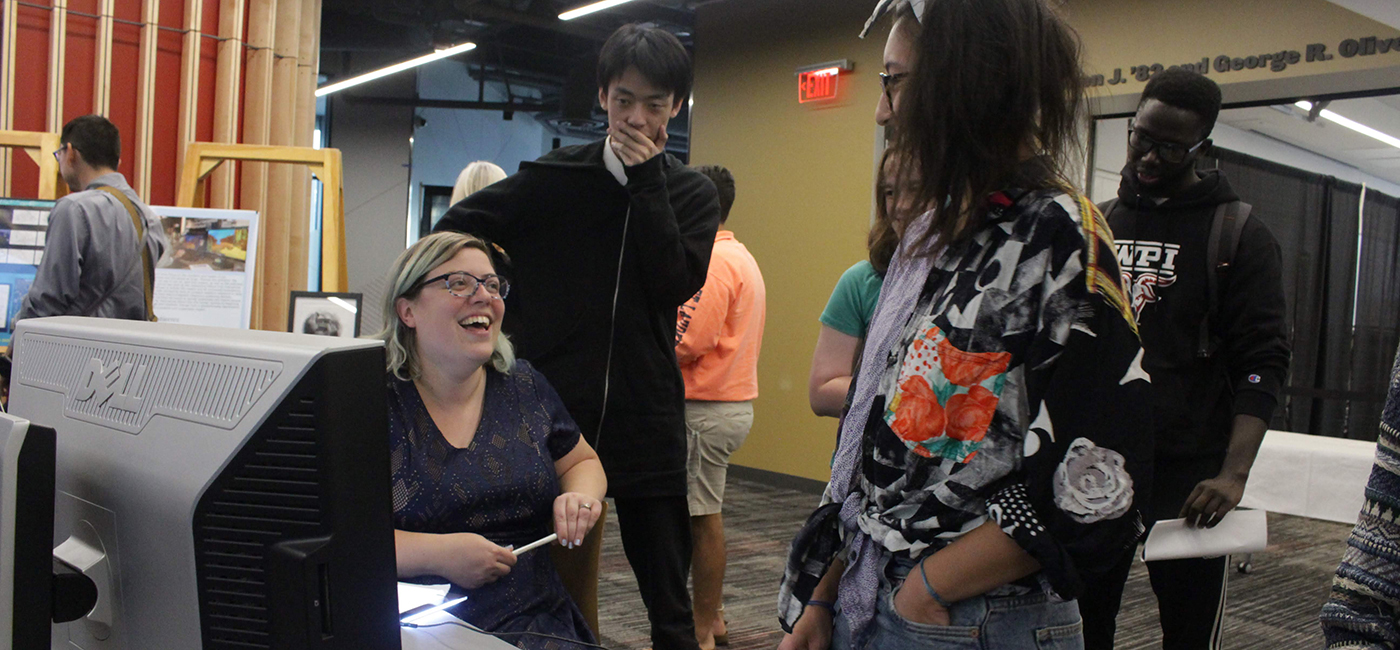WORCESTER, Mass.– July 2, 2009 – Brian Moriarty, an award-winning game designer, creative director, and multimedia producer, and Britton Snyder, a digital artist whose work has appeared in such bestselling games as Warcraft III, Diablo II, and WALL-E, will join WPI's groundbreaking Interactive Media & Game Development (IMGD) program this fall as professor of practice. Launched in 2005, the IMGD program was the first in the nation to blend the artistic and technical aspects of game creation.
"Brian and Britt bring a wealth of knowledge to WPI," said Mark Claypool, professor of computer science and director of the IMGD program. "Here, they will be able to teach aspiring game designers and artists how the game industry works and what is required to ship profitable and fun games. Their practical, industry-tested insights will complement the solid education students in our program receive in the principles of developing games and other interactive media."
Brian Moriarty has worked in game development and multimedia for more than 25 years, most recently as creative director at Foundation 9/ImaginEngine in Framingham, Mass., the largest independent game developer in North America. At ImaginEngine, he produced and/or designed several children's software titles, including three Parents' Choice award winners. Earlier, he co-founded and served as creative director at Mpath/HearMe, the Internet's first voice chat community, which had more than 10 million users at its peak.
As a project leader for Lucasfilm Games, he authored the acclaimed Loom, a graphical adventure game that sold more than 500,000 copies and won numerous honors, including the MacWorld Adventure Game of the Year Award in 1990. Previously, he was senior game designer at Infocom in Cambridge, Mass., an early pioneer in interactive fiction games. He wrote three of Infocom's original prose games: Beyond Zork, Wishbringer, which received a Critics Choice Award from Family Computing, and Trinity, which was voted the Best Adventure/Fantasy of 1986 by Computer Entertainer.
Moriarty, who holds a BA in English from Southeastern Massachusetts University and is currently completing an MEd in English at Framingham State College, worked as producer/educator from 2003 to 2006 at the Christa McAuliffe Challenger Center at Framingham State, where he developed planetarium shows and presented daily astronomy programs to middle school students. He has given lectures on the design and philosophy of computer games around the world. He is a member of the Science Fiction & Fantasy Writers of America and the International Game Developers Association.
See examples of Britton Snyder's digital art below:
Example 1
Example 2
Example 3
Britton Snyder has worked as an artist in the field of video game development for the past 10 years, specializing in high-resolution, three-dimensional models and textures for computer games. His contributions to a number of well-known titles include concept art, illustrations, 3D models, storyboards, animatics (animated storyboards), and cinematics (videos used within games).
He began his career as an intern at Blizzard Entertainment in Irvine, Calif., maker of the popular multiplayer game World of Warcraft. He worked on two of the company's blockbuster games, developing cinematics and storyboard sequences for Warcraft III (a predecessor of World of Warcraft) and the Diablo II expansion set (one of the biggest selling games of 2001), receiving a credit on both titles.
Snyder has also worked as an artist for Sony, Liquid Entertainment, RockStar Boston (formerly Mad Doc Software), THQ, Demiurge, and Seven45 Studios, a division of First Act. He has contributed to such games as Downhill Domination (cinematics), Dragonshard (artist), Empire Earth 2 expansion set (character artist), Empire Earth 3, WALL-E (artist), and Mass Effect for PC (downloadable content and 3D artist). Before joining WPI, he was working as a concept artist for an undisclosed project at Seven45 Studios.
Snyder earned a BFA at Berklee College of Music and studied figurative drawing and painting at Watts Atelier, the California Art Institute, and the New England Realist Art Center in Boston.
About the Interactive Media & Game Development Program
WPI inaugurated its IMGD major (imgd.wpi.edu) in 2005. The four-year undergraduate program blends the artistic and technical aspects of game creation. Administered by WPI’s Computer Science and Humanities and Arts departments, the program provides students a base education in the artistic (art, music, and story), and technical (programming) aspects of interactive media, and then requires that they select an artistic or technical concentration as the focus for the remainder of their program. There is particular emphasis on programmers and artists working closely together, providing invaluable experience for their post-graduate years. Students are also required to study social and philosophical issues associated with games and related media.

